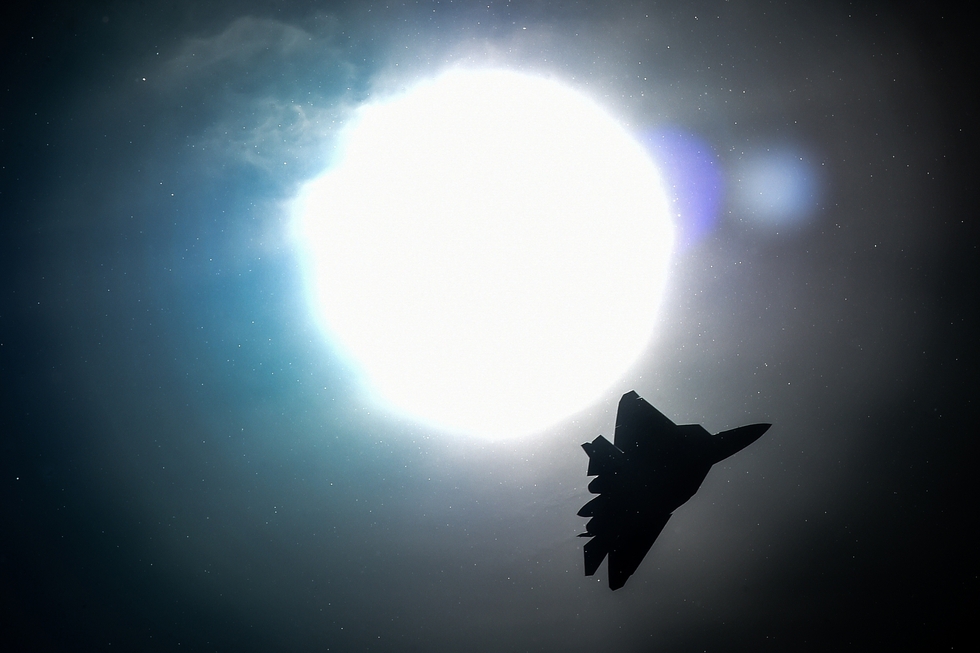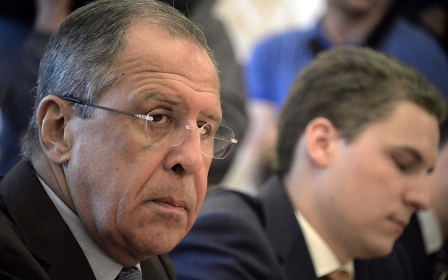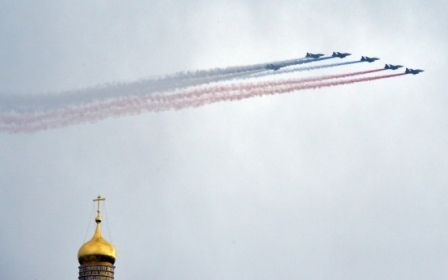Russian escalation in Syria puts pressure on Iran to follow suit

By all credible accounts, Russia has significantly stepped up its military involvement in Syria by deploying new equipment and personnel in and around the Syrian government’s stronghold of Latakia. There are even unconfirmed reports (and photos) of Russian servicemen deployed as far afield as Homs.
While the United States and its allies have predictably raised concerns about this Russian escalation, there is lack of clarity and confusion as to what Russia’s intentions are.
Publicly the US government has raised concerns on the potential for unforeseen consequences arising from “parallel” actions against the so-called Islamic State (IS) group. Whilst not entirely disingenuous, these concerns do not mask deeper US anxiety about the effect of Russia’s deployment on the wider insurgent movement in Syria, particularly on groups aligned with the West.
A far more interesting question is the effect of the Russian deployment on Iranian strategic calculations. Despite the convergence of views and interests on Syria, Russia and Iran do not coordinate on the ground.
Moreover, the significance of the Russian deployment notwithstanding, it is the Islamic Republic and its allies who are fighting and dying on behalf of the embattled Syrian state. Iranian decisions pursuant to the Russian deployment may have a profound impact on the dynamics of the intensifying Syrian conflict.
Russia in Syria
The Russian military build-up in Latakia is not an entirely new development. Indeed, Russia has been deeply involved in the Syrian conflict from the very outset in early 2011.
Hitherto, this involvement has taken the form of aggressive intelligence gathering well beyond Russia’s sole declared Syrian base in Tartus. Russian military intelligence assets are deployed near to the most important conflict zones. One such base in the Tel al-Hara mountain in southern Syria was reportedly captured by Syrian rebels in October 2014.
The reported establishment of a forward air operating base in Latakia, possibly deploying MiG 31 and Sukhoi SU 25 fighter jets, is at this stage of primarily psychological import. It is a morale boost for Syria’s embattled forces and sends an unmistakable warning to the ruling rebel alliance further north in Idlib led by al-Nusra Front, al-Qaeda’s franchise in Syria.
The self-styled “Army of Conquest” spearheaded by al-Nusra Front, is bristling with momentum following its capture of Idlib in late March and most recently its capture of the important Abu al-Duhur airbase in the same province. Flushed with these significant victories, al-Nusra and its allies are poised to launch an offensive into the Alawite heartland of Latakia.
The Russian deployment in Latakia sends a message of potential intervention, including airstrikes on al-Nusra positions, in the event of a rebel advance on Latakia. But beyond a possible limited intervention in Latakia and Idlib provinces it is difficult to envisage a wider role for Russia’s forces.
Leaving aside the intensely idiosyncratic features of the various Syrian battlefields, any Russian intervention beyond Latakia and Idlib, especially if it involves ground operations, must reckon with the realities of attrition warfare and the resulting high casualty rates.
On the political front, the Russian intervention may, as Washington and its allies claim, complicate attempts to bring warring sides to the negotiating table. But the US is hardly in a position to claim the moral high ground in view of the fact that its own intervention in Syria (ostensibly to fight IS) is designed to increase the leverage of non-IS rebels and thus weaken the Syrian government.
Iran under pressure
The Islamic Republic is struggling to rejuvenate its strategy in Syria, especially in the face of escalating government losses and setbacks, not just in Idlib, but more crucially in and around Damascus and in the areas bordering Lebanon.
Nowhere is the limitation of Iranian strategy more apparent than in the fight for Zabadani (northwest of Damascus) where Iran’s Lebanese ally Hezbollah has been trying for two months to wrest control of the strategic town from rebels. Zabadani lies on a crucial supply route that leads to Hezbollah’s heartlands in the Lebanese Bekaa Valley. These are areas that Iran will fight tooth and nail to secure.
Iran’s over-reliance on Hezbollah has stretched the Lebanese organisation to a near breaking point in Syria and exposed its combat limitations against determined foes in the form of the rebels, including al-Nusra.
While simultaneously committed to a peace process, Iran is keenly aware of the prevailing dynamics of war in Syria, which are likely to intensify in the coming months.
Despite being involved at every level of the Syrian conflict, Iran’s actual direct military contribution is fairly modest, spearheaded by the Quds Force of the Islamic Revolutionary Guards Corps (IRGC) who likely number in the low hundreds. Nevertheless, several dozen Quds Force operatives, including senior commanders, have been killed in Syrian battlefields since 2012.
With the Syrian armed forces and allied militia grappling with an acute manpower crisis, and with little prospect of turning the tide of the war in the short term, Iran may be forced to significantly ramp up its military presence.
This deployment will become inevitable if the assortment of rebel groups in and around Damascus pose a serious threat to the centre of the city. The collapse of Damascus and the effective eradication of the Syrian state will place intolerable pressure on the Qalamoun region and the Alawite heartland of Latakia, core sectarian-strategic territory, which the Islamic Republic cannot afford to lose.
There is precedence for significant Iranian military deployments in this region, stretching back to 1982 when the IRGC deployed several thousand of its best fighters to the Bekaa Valley ostensibly to resist the Israeli invasion of Lebanon.
This time around, the IRGC may well consider deploying up to 10,000 personnel in and around Damascus. The political, diplomatic and sectarian repercussions will be profound, but from an Iranian point of view the risks and costs are tolerable in view of the alternatives.
In the final analysis, Russia’s escalation - and Washington’s grudging acceptance of it despite noisy objections - provides a cover for a considerable and avowed Iranian military deployment in Syria.
- Mahan Abedin is an analyst of Iranian politics. He is the director of the research group Dysart Consulting.
The views expressed in this article belong to the author and do not necessarily reflect the editorial policy of Middle East Eye.
Photo: A Russian Sukhoi T-50 jet fighter performs during the MAKS-2015, the International Aviation and Space Show, in Zhukovsky, outside Moscow, on 25 August 2015 (AFP)
New MEE newsletter: Jerusalem Dispatch
Sign up to get the latest insights and analysis on Israel-Palestine, alongside Turkey Unpacked and other MEE newsletters
Middle East Eye delivers independent and unrivalled coverage and analysis of the Middle East, North Africa and beyond. To learn more about republishing this content and the associated fees, please fill out this form. More about MEE can be found here.





